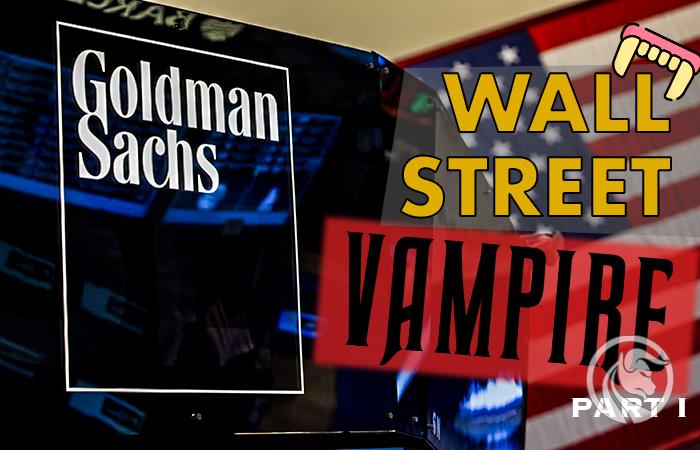Goldman Sachs - an investment bank or the Vampire of Hell of Wall Street? Part I
Goldman Sachs is one of the most famous financial institutions in the world. Partly due to its scale of operation, as well as the frequently pinned patch "manipulator" financial market. In a famous article by Matt Taibi, Goldman Sachs was compared to Infernal Vampire (Vampire Squid).
Goldman Sachs was founded in 1869 in New York by Marcus Goldman. Over 150 years of history, the company has transformed from a small entity into one of the largest investment banks in the world. In today's article, we will present the history of this institution and the people who left their mark on the history of this bank. We invite you to read!
The beginnings of Goldman Sachs
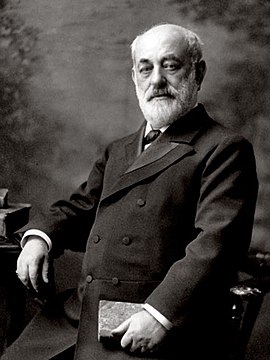
Marcus Goldman. Source: wikipedia.com
The company was founded in the late XNUMXs and began operating in the financial sector. It was a small enterprise that had to compete in a fragmented financial services market. There were two aspects that mattered customer relations or reputation. Relationships were helped by a network of contacts, in those days thanks to "acquaintances" business could develop much faster. In turn, gaining a reputation took years of offering good services at an affordable price. The hero of today's article initially chose the second way.
One of the turning points was 1882. Then Samuel Sachs, who was the son-in-law of the founder of the company - Marcus Goldman, joined the company. The name was then changed to Goldman Sachs & Co. Another turning point was in 1896 when Goldman Sachs joined the membership New York Stock Exchange (NYSE). This allowed the company to spread its wings and made it easier to gain a network of business contacts.
Ten years after becoming a member of the NYSE, Goldman Sachs conducted an initial public offering (IPO) of Sears, Roebuck and Company. The deal was possible because Henry Goldman was a friend of Julius Rosenwald. In the following years, Goldman Sachs became the organizer of subsequent IPOs. The list of clients included companies such as Woolworth and Continental Can. In 1912, Goldman Sachs decided to hire a partner who was not a member of the Goldman or Sachs family. That person was Henry S. Bowers. So it was the first step in Goldman Sachs abandoning the status of a family business.
World War I was the moment when the first major split in the company occurred. Tensions escalated from the second half of 1914, culminating in 1917. The reason was the pro-German attitude of Henry Goldman (he came from a family of German immigrants). Henry Goldman in 1915 publicly expressed his support for Germany's policy. This includes because of him, Goldman Sachs resigned from co-financing for France and Great Britain in 1915. Even then, some partners were dissatisfied with this. With the entry of the United States into the war on the side of the Entente, such a situation hurt business. In 1917, due to pressure from partners, Henry Goldman resigned from being a partner of the company.
1918 - 1930: from top to bottom
The Roaring Twenties were a time of high profits in investment and trading banking. The great bull market encouraged many companies to debut on the stock exchange. This meant that Goldman Sachs had no problems finding clients who needed financial advice. Trading activities were also more and more tempting. The bull market meant that aggressive investing and leveraging the position was a chance to achieve above-average profits. However, 1929 verified investors with a large leverage. Many famous investors of the time found themselves on the brink of bankruptcy.
After the 20's bubble burst and start Great Depression, Goldman Sachs found itself in serious trouble. The reason was the large losses of the closed-end fund Goldman Sachs Trading Corp., which was founded in December 1928, a few months before the crash. As a result, Goldman Sachs reoriented its operations. Greater emphasis was placed on investment banking activities and trading activities were minimized. He helped rebuild the bank's tarnished reputation Sydney James Weinbergwho earned the nickname Mr. Wall Street.
Sidney Weinberg - the golden child of Wall Street
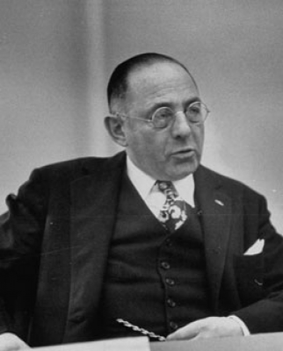
Sidney Weinberg. Source: wikipedia.org
Sidney Weinberg's story is very interesting. He started with the lowest position at Goldman Sachs. He was an assistant janitor with a wage of $3 a week. He dealt with, among others cleaning the shoes and hats of Goldman Sachs employees. Paul J. Sachs, the grandson of the founder of the company, helped him develop his career. Paul Sachs liked Sidney and decided to help him. He transferred him to a law firm that Sidney had reorganized. The company, seeing the great potential of Weinberg, decided to take care of his education. Sidney enrolled at Browne's Business College in Brooklyn.
After World War I, Weinberg began his career as a trader. In 1925, Goldman Sachs decided to buy him a place on the New York Stock Exchange. It was a big credit of trust. Two years later, as a result of his successes in the professional and investment field, Sidney became a partner in the company. He worked with Waddill Catchings at Goldman Sachs Trading Corp. As a result of the losses, Goldman was on the verge of bankruptcy. However, thanks to Weinberg's management skills, the company turned around. In 1930, Sidney became the head of Goldman Sachs and held this position until his death in 1969.
Thanks to the enormous effort put in by Weinberg and the employees of Goldman Sachs, the company got back on its feet. The increase in reputation was evidenced by the organization of the initial public offering (IPO) of the Ford Motor Company in 1956. It was a great honor for the company, because it won the competition with much larger competitors. Goldman Sachs has been constantly developing, also by diversifying its activities. An example is the creation of a market analysis department. It is worth noting that the bank was one of the pioneers of risk arbitration.
READ: JP Morgan Chase – one of the most famous investment banks in the world
The 70s: the time after Weinberg
Goldman Sachs was very lucky with employees at the time. What's more, the organizational culture allowed for quick promotion of employees from below, if only they showed skills useful to the company. This was the case with Gus Levy, who joined Goldman in the XNUMXs. Gus was the first to use block trading at Goldman Sachs. His successes in the trading field allowed him to increase his position in the organization. After 1969, Gus Levy became a Senior Partner, which allowed to develop the trading segment in the company.
Levy also changed the bank's investment philosophy. It can be characterized as being"greedy in the long run". This meant that Goldman Sachs was to focus on maximizing profits in the long term. According to Gus, short-term losses should not be a reason to change the investment strategy. Levy also convinced partners to reinvest a significant portion of their earnings into the bank's operations. This was to encourage partners to look at Goldman Sachs' activities in the long term.
In 1970, the first foreign branch was opened - the choice fell on London. Just when it seemed that the future of the company was bright, the largest bankruptcy in the history of the American economy occurred. The same year that Goldman Sachs opened an overseas branch, Penn Central Transportation Company collapsed. The enterprise collapsed only two years after its formation. Goldman Sachs was involved in the company's debt issue for $80 million. This tarnished the bank's reputation. What's worse, Goldman was involved in numerous court cases, which could have called into question the continued operation of the bank.
However, the bank came out unscathed again. As early as 1972, Goldman opened a department responsible for Wealth Management as a result of the interest of customers. At the beginning, the activity focused on the debt securities market. Over time, the offer has been significantly expanded. Blessing was the collapse of the Bretton Woods System, which brought about floating exchange rates. On the one hand, it allowed to find clients who needed advisory services in the field of currency risk management, on the other hand, it created an opportunity to develop trading activities.
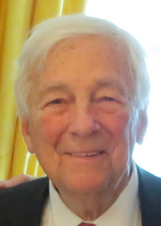
John C. Whitehead. Source: Wikipedia.org
In 1974, Goldman Sachs was again a pioneer in the market. It was the first investment bank to develop, implement and disseminate a strategy called "white knight". This is a strategy that relies on a "friendly takeover" at a fair price. The goal was to protect the company from a potential hostile takeover. The white knight works with the management of the company at risk and develops a strategy that is most beneficial for the company's shareholders. In 1974, Goldman Sachs protected Electric Storage Battery from hostile takeovers by International Nickel and Morgan Stanley.
In 1976, John L. Weinberg, son of Sidney Weinberg, became one of the company's two Senior Partners. One of the fruits of cooperation between John L. Weinberg and John C. Whitehead was the development of 14 business rules to which Goldman Sachs refers to today. The rules include, among others:
- putting the client's interests first
- taking care of your reputation, employees and capital,
- concern for the well-being of shareholders.
1980 – 2000: another period of dynamic development
In 1981, Goldman Sachs took over J. Aron & Company, which specialized in trading in raw materials and agricultural products (mainly trading futures on gold i coffee). With the acquisition of J. Aron, Goldman Sachs was joined by Lloyd Blankfein, who played a very important role in the history of the bank in the following years. It was Blankfein who was the CEO of this bank in the years 2006 - 2018. Thus, he was one of the few Managing Directors who "survived" the subprime crisis in the United States.
In 1985, Goldman Sachs participated in an initial public offering REIT. The value of the properties then belonging to Rockefeller Center Properties Inc was then estimated at about $ 1,6 billion. At that time, it was the largest REIT debut in US history at the time. The aforementioned enterprise owned Rockefeller Center.
A year later, the Goldman Sachs Asset Management (GSAM) segment was established, which dealt with the management of its own investment and hedge funds. 1986 is also the time of the debut Microsoft. He advised Goldman Sachs in the IPO, of course. At the end of the XNUMXs, there was also an expansion of foreign activities. The Bank was present on the most important developed stock markets outside the United States: the London Stock Exchange and the Tokyo Stock Exchange. In the United Kingdom, the bank quickly joined the group of leaders in the M&A market.
The collapse of the Soviet Union and the political transformation of the Eastern Bloc created great development opportunities for the bank. The period of privatization of state-owned enterprises, which took place from the early 90s, was particularly profitable. In 1994, the bank opened its first branch in the People's Republic of China. The reason was the desire to participate in the rapidly developing Chinese market.
In the early 90's the bank designed the GSCI (Goldman Sachs Commodity Index)which tracks the behavior of the most important raw materials. The index is the benchmark of many funds investing in the commodity market to this day.

Source: wikipedia.org
The period of the 90s was a time of a big bull market on the American stock market. Neither the Mexican crisis nor the asian and Russian. The dynamic growth was helped by the greater opening of the economies of the Eastern Bloc and China, which on the one hand increased the demand for Western products, and on the other offered the potential to reduce production costs. The sector of technology companies also developed dynamically. Goldman was also there. In 1996, the bank participated in the IPO of one of the stars of those years - Yahoo!. Two years later, they were one of the main organizers of the NTT DoCoMo OPO. The Japanese telecommunications company raised over $18 billion from its IPO.
1999 - Goldman Sachs becomes a public company
For many years there were discussions inside the bank about becoming a public company. Many of the bank's leaders tried to convince partners to take such a step. However, it wasn't that simple. The partners feared that Goldman would lose its organizational culture. Attempts at persuasion by the older partners came to nothing. Neither Sidney Weinberg nor the duo of Robert Rubin & Steve Friedman could convince the partners to take such a step. In the late 90s, Goldman Sachs was the last major investment bank that was not publicly traded.
High market valuations finally convinced Goldman Sachs partners to transform the bank into a joint-stock company. The investment bank's IPO took place in May 1999. Pursuant to the offer, 12,6% of the bank's shares went to investors as part of a public offering. In turn, 221 partners received a total of 48,3% of shares in the company. Another 21,2% of the shares were transferred to bank employees who did not hold the position of a partner. The remaining 17,9% went to former partners, long-term investors and Sumitomo Bank and Kamehameha Schools. Henry Paulson became the CEO and chairman of the Board of Directors. The company has raised over $3,5 billion for further development of the organization.
Funds from the IPO helped to complete the acquisition of Spear, Leeds & Kellogg for $6,3 billion. The company was purchased with a share issue and cash. The value of $4,4 billion was Goldman Sachs shares, while $1,9 billion was paid in cash. Spear, Leeds & Kellogg dealt with i.a. offering clearing services and market maker activities on the New York Stock Exchange.
2001 – 2008: raw material boom and real estate boom
It's the beginning of the XNUMXst century dotcom market bubble burst. This meant that the period of large mergers and spectacular debuts of technology and telecommunications companies was a thing of the past. That didn't mean Goldman Sachs stopped growing. The presence in developing markets, which experienced a boom related to the increasing prices of hydrocarbons, helped.
In 2001, Goldman Sachs (specifically Jim O'Neil) first coined the term BRIC concerning dynamically developing economies Brazil, Russia, India and Chin. Over time, the suffix S (South Africa) was added to this acronym. On the wave of the success of BRIC, which very quickly broke through to the media, Goldman coined the term "The Next Eleven". Among the countries that were included in the 11 list were, among others: Bangladesh, Egypt, Indonesia, Turkey, Vietnam and South Korea.

Lloyd Blankfein. Source: wikipedia.org
In 2004, Lloyd Craig Blankfein, who had worked at the bank since 1981, was appointed COO.. Two years later, he became CEO after Henry Paulson became the 74th Secretary of the United States Treasury. It was Blankfein who was a strong supporter of the bank's involvement in the commodities market. The boom in raw materials allowed to significantly increase the bank's revenues and profits. Between 2003 and 2007, revenue increased from $16 billion to $43 billion. On the other hand, net profit improved from USD 3 billion to USD 11,6 billion. The US real estate market also contributed to better results. Goldman then participated in, among others, in the sale of financial instruments based on real estate. It was a goldmine. The products seemed safe because the real estate market was treated as a safe asset. Advanced risk management models created the illusion that risks were under control. However, excessive leverage by some financial institutions has created network risks and threatened the stability of the global financial system.
2008 – 2009: Real estate crisis
The securitization of loans and mortgages has created a whole new sector in the financial market. Products based on securitized mortgage debt started to appear like mushrooms after the rain. What's more, more and more complex instruments based indirectly on mortgage loans began to be created (e.g. synthetic CDOs, CDSs on CDOs, etc.).
The boom in the real estate market could not last forever. Some Goldman Sachs employees began to realize this in the summer of 2007. They were the most convinced of the imminent fall in the real estate market Michael Swenson and Josh Birnbaum. They started taking short positions on many MBSs (Mortgage-Backed Securities) with a low rating (based on subprime loans, i.e. less promising customers). Thanks to this Goldman Sachs made $4 billion in trades and paid out 10-figure bonuses on its trades.
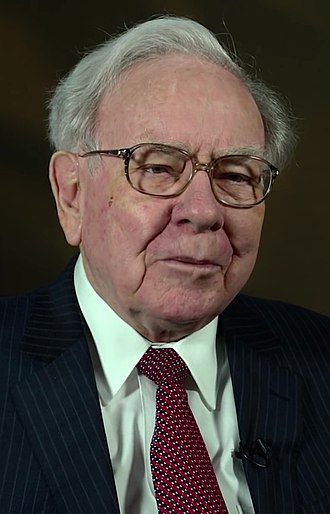
Warren Buffett. Source: wikipedia.org
However, the scale of the problems the bank had to face was much greater. The reason was Lehman Brothers bankruptcy, which caused the American financial market to be one step ahead of a heart attack. Goldman Sachs badly needed an injection of capital. As a result, he agreed to a contract with Berkshire Hathawaywhich took the opportunity to purchase bank shares on preferential terms. Warren Buffett paid $5 billion for the bank's dividend-preferred stock and committed to purchase an additional $5 billion of common stock if needed. However, the bank needed more capital to ensure sufficient liquidity. Goldman Sachs received $10 billion in funds under the TARP program (Toubled Asset Relief Program), which was funded by the US Treasury Department. The funds were transferred to Goldman Sachs in November 2008 and were repaid with interest in June 2009. What's more, the bank quickly organized a public offering of shares, raising another $5 billion in capital from the market.
The bank found itself in temporary liquidity problems. However, he had a well-functioning business to turn things around quickly. Already in June 2009, Goldman repaid the TARP loan (with interest reaching 23%). Two years later, Goldman Sachs bought out preferred stock from Berkshire Hathaway. Thus, after only two years, the bank was so confident in its foundations that it did not want to continue paying the "special dividend" to Warren Buffett's company.
By repaying loans from the government, senior managers were able to receive high bonuses back. In 2008, Lloyd Blankfein and 6 other senior executives decided not to receive performance bonuses "for moral reasons". The fact is that at the turn of 2008 and 2009, American banks were constantly attacked by the media and politicians as the main culprits of the 2007-2009 crisis. It was safer not to expose ourselves unnecessarily to the government, the media and the public.
2010 – 2019: post-crisis time
The crisis on the subprime market caused central banks in many countries to start an unprecedented policy of ultra-low interest rates and quantitative easing (so-called QE). The beneficiary of such a policy was the financial market. Many stock markets experienced a multi-year bull market. Despite this, Goldman Sachs had trouble scaling up. The company's revenues over the years 2010 - 2019 remained at a similar level. During this period, the bank's revenues fell below $3 billion three times, which was well below the "golden years" of 30-2006. Changes in the business model were necessary.
By 2019, the bank had a growth problem. The problems in the investment field did not help the development either. A great example was the story of Global Alpha Fund LP, which was the largest hedge fund managed by Goldman Sachs. Global Alpha was part of the GSAM (Goldman Sachs Asset Management) segment. For many years it was a symbol of success. From a small fund with $10 million in assets (mid-90s), Global Alpha grew to a record $12 billion in assets under management in 2007. The success of the fund resulted from the implementation of modern technologies in the investment field.
The fund made investment decisions based on computer models and application high-frequency trading (HFT - high-frequency trading). The models were created by highly paid specialists such as Cliff Asness and Mark Carhart, who were called "quants" (short for quantitative analysts). However, the new reality that hit the markets after 2007 meant that the old models were no longer able to achieve satisfactory rates of return. In 2008, assets under the management of this fund fell to just $2,5 billion. At the time of the fund's closure in 2011, AUM (Assets Under Management) fell below $1 billion.
Of course, the lack of growth did not mean that the bank's operations were unprofitable. Still, Goldman Sachs was able to stay on the market thanks to its reputation and won lucrative contracts. One example was a contract with Apple to lead a $17 billion bond public offering. It was a very prestigious contract for which the largest investment banks in the world competed. In the end, the joint offer of Goldman Sachs and Deutsche Bank prevailed.
Marcus by Goldman Sachs - a new branch of the bank
In the years before COVID-19, there was a slow reorientation of the bank's operations. From a bank focused solely on investment and asset management, Goldman turned to retail clients. Already in August 2015, Goldman Sachs acquired the deposit platform of GE Capital Bank. Thanks to this, the investment bank gained the first foothold in the segment of products for a retail client.
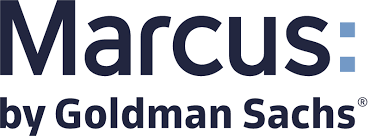
Source: marcas.com
In April 2016, GS Bank was established. Six months later, Goldman launched an unsecured loan business under the Marcus by Goldman Sachs brand. The name Marcus itself comes from the name of the founder of the investment bank - Marcus Goldman. Then, the GS Bank deposit platform was combined with the Marcus platform.
By the end of 2017, the bank had granted $2 billion in consumer loans. In the following years, the platform debuted in the United Kingdom. In addition, Marcus was constantly developing his offer. In August 2019 Apple Lossless Audio CODEC (ALAC), started cooperation with Goldman Sachs to issue an Apple Card. This is a credit card that can be used by US citizens.
For the time being, activities related to the development of a digital bank generate losses for Goldman Sachs. In 2020, the loss was about $800 million, and a year later it was $1 million. It is worth mentioning, however, that the revenues of this segment are growing dynamically. In 050, they amounted to USD 2022 billion, which meant a y/y increase of 1,5%. Such dynamic growth was only possible in the digital channel.
Goldman Constantly increases its commitment to the development of the digital channel. In April 2018, the bank acquired Clarity money for $100 million. Clarity was a start-up operating on the market of financial products for a retail client. The reason for the purchase was the desire to extend the functionality of the Marcus application.
In 2022, Goldman Sachs acquired a fintech called GreenSky for $2,24 billion. The transaction was also to lead to the expansion of Marcus' loan offer. Many GreenSky customers used fintech to obtain loans cheaply to finance home purchases (e.g. a small renovation).
2020–present: A period of turmoil
Only the Covid-19 period allowed the bank to increase revenues. The reason was the next wave of the bull market that started in March 2020 and lasted until the end of 2021. The era of cheap money and low inflation, combined with fiscal stimulus, has caused another outbreak of speculative fever. One of the beneficiaries was the financial industry. This resulted from the fact that there was an escape from money. Many companies used ultra-low interest rates to obtain very cheap financing. The boom in the stock market increased the level of assets under management, which translated into higher commissions. The bank also used this period for acquisitions.
In August 2021, Goldman Sachs acquired assets under the management of NN Investment Partners for €1,7 billion. At the time of the acquisition, assets under management (AUM) amounted to $335 billion. The transaction was aimed at increasing market share in the asset management industry. The seller of the shares was the insurer NN Group.
Goldman Sachs in 2022 acquired NextCapital Group, which is an American startup that operates in the robo-advisory market for pension solutions. Therefore, it is a willingness to participate in the growing trend of automating and simplifying asset management. The transaction was estimated at $110 million. At the time of the transaction, NextCapital had $7,5 billion in assets under management.
The war in Ukraine made the period of low interest rates a thing of the past. Because of the war the bank also closed its operations in Russia. The bear market in the US stock market caused that assets under management decreased and revenues from investment banking decreased. At the same time, worse financial results forced Goldman Sachs to make redundancies. In January 2023, they amounted to over 3000 people.
Part I summary
Goldman Sachs is the story of a small company from the financial industry, which over the course of several decades has become one of the largest investment banks in the world. The efforts of partners, employees and managers of Goldman helped in the development. The great personalities associated with this bank include: Sidney Weinberg, Lloyd Craig Blanfein or Henry Poulson. Major scandals and the bank's relationship with the government are omitted from this part of the story. More about these aspects will be in the second part of the article, which will soon be published in Forex Club. In the second part, we will try to answer the question whether Goldman Sachs really deserves negative feedbackthat some journalists and ordinary investors have about the company.






















![Forex Club – Tax 9 – Settle tax on a foreign broker [Download the Application] Forex Club - Tax 9](https://forexclub.pl/wp-content/uploads/2024/02/Forex-Club-Podatek-9-184x120.jpg?v=1709046278)
![Trading View platform – solutions tailored to the needs of traders [Review] trading view review](https://forexclub.pl/wp-content/uploads/2024/03/trading-view-recenzja-184x120.jpg?v=1709558918)
![How to connect your FP Markets account to the Trading View platform [Guide] fp markets trading view](https://forexclub.pl/wp-content/uploads/2024/02/fp-markets-trading-view-184x120.jpg?v=1708677291)
![How to invest in ChatGPT and AI? Stocks and ETFs [Guide] how to invest in chatgpt and artificial intelligence](https://forexclub.pl/wp-content/uploads/2023/02/jak-inwestowac-w-chatgpt-i-sztuczna-inteligencje-184x120.jpg?v=1676364263)


![WeWork – the anatomy of the collapse of a company valued at $47 billion [WeWork, part II] wework bankruptcy story](https://forexclub.pl/wp-content/uploads/2024/04/wework-bankructwo-historia-184x120.jpg?v=1711729561)
![Adam Neumann – the man who screwed up Softbank [WeWork, part AND] adam neumann wework](https://forexclub.pl/wp-content/uploads/2024/04/adam-neumann-wework-184x120.jpg?v=1711728724)





![How to transfer shares to another brokerage office [Procedure description] how to transfer shares to another brokerage house](https://forexclub.pl/wp-content/uploads/2024/03/jak-przeniesc-akcje-do-innego-biura-maklerskiego-184x120.jpg?v=1709556924)

![The most common mistakes of a beginner trader - Mr Yogi [VIDEO] Scalping - The most common mistakes of a beginner trader - VIDEO](https://forexclub.pl/wp-content/uploads/2024/03/Scalping-Najczestsze-bledy-poczatkujacego-tradera-VIDEO-184x120.jpg?v=1711601376)
![Learning patience: No position is also a position - Mr Yogi [VIDEO] Scalping - Learning patience - No position is also a position - VIDEO](https://forexclub.pl/wp-content/uploads/2024/03/Scalping-Nauka-cierpliwosci-Brak-pozycji-to-tez-pozycja-VIDEO-184x120.jpg?v=1710999249)
![When to exit a position and how to minimize losses - Mr Yogi [VIDEO] Scalping - When to exit a position and how to minimize losses - VIDEO](https://forexclub.pl/wp-content/uploads/2024/03/Scalping-Kiedy-wyjsc-z-pozycji-i-jak-minimalizowac-straty-VIDEO-184x120.jpg?v=1710336731)


